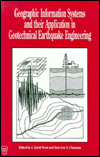Geographic Information Systems and Their Application in Geotechnical Earthquake Engineering: Proceedings of a Workshop Sponsored by the National Science Foundation Through the Earthquake Hazard Mitigation Program and the Geomechanical, Geotechnical, and G
Rapid development of a variety of information systems has led to a frequent failure to clearly distinguish between GIS and other similar systems which do not have the ability to integrate geographically referenced data analytically. In this volume, academic and practicing engineers survey the latest information relating to GIS technology and provide possible strategies for the resolution of a wide range of problems. Chapters detail what would be required in a "perfect" GIS from an earthquake...
Search in google:
Rapid development of a variety of information systems has led to a frequent failure to clearly distinguish between GIS and other similar systems which do not have the ability to integrate geographically referenced data analytically. In this volume, academic and practicing engineers survey the latest information relating to GIS technology and provide possible strategies for the resolution of a wide range of problems. Chapters detail what would be required in a "perfect" GIS from an earthquake engineering viewpoint; the need for standards for transfer of geotechnical information; storage and data quality considerations; and hardware/software options given the technology available today.
ForewordContentsWorkshop ProgramParticipant InformationBreakout Group Topics and LeadersSummaries from Breakout Discussion Groups1Issues in GIS-Based Subsurface Data Management12National Geotechnical Experimentation Sites Central Data Repository17The Application of 3-Dimensional Geographic Information Systems in Geotechnical Engineering21Some Considerations for the Use of Geographic Information Systems25A Geotechnical/Earthquake Engineering Information System - Expanding the GIS Conceptual Framework27Accuracy Requirements for GIS-Based Seismic Risk Assessments32Earthquake Risk GIS Analysis for Ningxia Hui Autonomous Region, China36Infrastructure Damage Modelling with GIS45Considerations in Integrating Geographic Information System Technology in Earthquake Hazard Analyses49GIS for Regional Seismic Hazard and Risk Analyses56Geographic Information System Planning for Geotechnical and Earthquake Engineering Applications at the Savannah River Site, S.C.61Liquefaction Analysis in a GIS Environment65Liquefaction Potential of Western Puerto Rico72Development of a Geographic Information System for Seismic Hazard Study of Charleston, S.C. Area77Caltrans Seismic Hazard/Risk Map and Proposed GIS Applications82A Prospect for Liquefaction Hazard Evaluation Using GIS86A Geotechnically-Oriented GIS for Seismic Hazard Mapping90State of the Art in Spatial Data Transfer: FIPS 17395Perceived Role of GIS in Geotechnical Earthquake Engineering Studies at U.S. Army WES100Accessibility of Geotechnical Earthquake Engineering Data and the Need for Data Storage and Dissemination Standards104Towards a Common Data Exchange Format Between Geographic Information Systems108Subject Index113Author Index115








